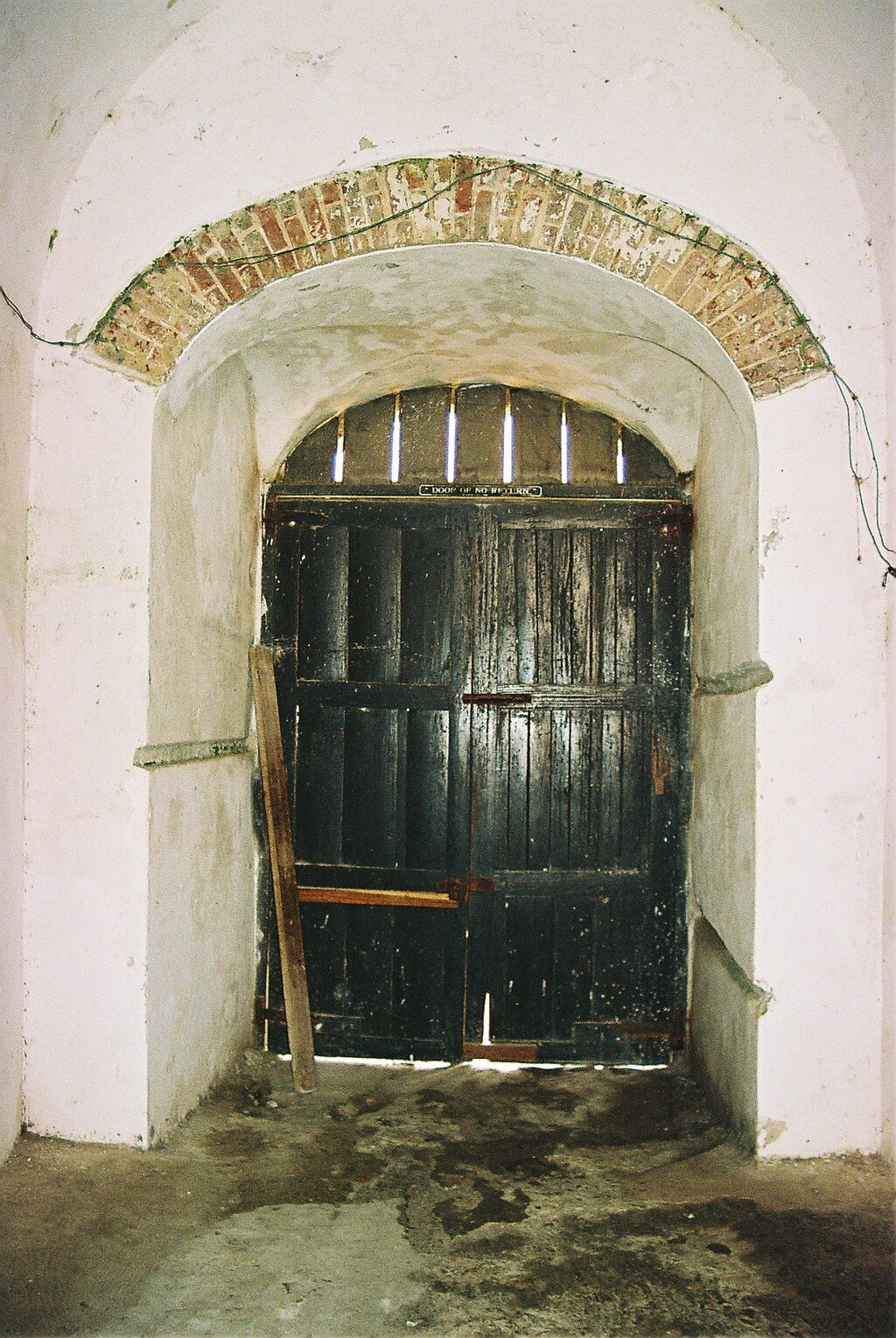
Door of no Return (c) Remo Kurka photography
Breakdown of Roles for Coastal Africans:
| Role | Details |
|---|---|
| Interpreters ("linguists") | Facilitated trade and communication between Europeans and African traders |
| Middlemen / Brokers | Coastal elites, often from Fante, Akwamu, or Anlo backgrounds, profited as intermediaries between inland slave suppliers and European buyers |
| Soldiers / Security | Forts employed locally trained African guards, often armed |
| Porters & Labourers | Loaded goods, maintained fort infrastructure, transported slaves |
| Craftsmen | Built and repaired ships, carpentry, blacksmithing, etc. |
| Domestics (Servants, Cooks, etc.) | Worked inside fort households, including European quarters |
| Slave Dungeon Attendants | Managed captives, enforced order, fed prisoners under supervision |
Why Were So Many Locals Involved?
Colonial forts were isolated European outposts surrounded by African populations. They were dependent on local labor for all functions — from construction to daily operations.
Coastal communities often negotiated access to forts in exchange for trade privileges, employment, or military protection.
Many local leaders profited from their role as intermediaries in the slave trade, receiving European goods (guns, textiles, alcohol) in return.
⚠️ Important Context:
Not all locals participated willingly. Some roles (especially forced portering or dungeon work) were coerced or taken under duress.
The elite coastal class (especially Fante merchants and chiefs) were active collaborators in many cases, but many ordinary people had limited power or choice.
Historical Support:
Historian Ray Kea notes that European forts were heavily dependent on local African labor and logistics.
The W.E.B. Du Bois Center and Ghana Museums and Monuments Board both reference African workers as essential to fort operations.
Studies of Anomabo, Elmina, and Cape Coast show that African-European cooperation and tension shaped daily life in and around the castles.
Conclusion:
It is safe to estimate that 70–90% of those who worked in and around the castles were Africans, mostly from coastal Ghanaian communities. The European presence was always small, and their ability to maintain forts and conduct trade depended entirely on African labor, alliances, and cooperation — willing or otherwise.